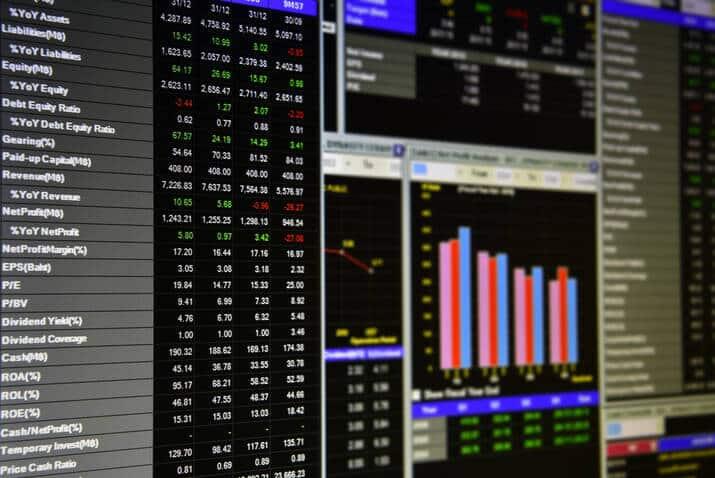
The Problems of Trading Strategies
The financial world is full of marketers of trading strategies. However, the vast majority of these strategies are not suitable for investing. They are neither diligently studied, nor do they respond to in-depth knowledge of the market.
We really must bear in mind that not because we have managed to make a couple of good trades we are in a position to think that we are great traders.
Lucky fools do not bear the slightest suspicion that they may be lucky fools. They do not know that they belong to such a category. They will act as if they deserved the money.
Usually, traders get to the market; they study one or two indicators and create a strategy.
They will have some luck; however, after a while, they will realize that they are not going to make money in the market continually. In the end, they decide to write books and sell their knowledge as another way to take advantage of the thing.

How to observe a stock market and obtain accurate conclusions from these observations
Let’s say we have a group of traders whose strategies are better than average for us. They will have a good year half the time, a bad year the other half, half of them will have a single profitable year, A quarter of them will have two good years in a row and so on.
The more you look at the fluctuations of the market, the stock market and your portfolio, the less sense your observations make. So be careful not to look at the movements of the stock market up and down in real-time and think that you are learning something.
The stock market is no different from any other field of study in which we observe behaviours from which we must draw conclusions that will always be hypotheses.
The study of the stock market is not different from the study of nature. To obtain accurate conclusions, we apply the same method that we apply to try to get to know nature:
- Propose a problem.
- Observe the problem.
- Look for a theory that explains it.
- Make predictions based on that theory.
- Check those predictions by doing experiments or observations.
- If the results agree with the theory, go back to the fourth step, if not, go back to the third.
Financial markets
Let’s gather more information about financial markets.
Financial markets are an essential component of the global economy, serving as platforms for the buying, selling, and trading of financial instruments such as stocks, bonds, currencies, and derivatives.
These markets play a critical role in the allocation of capital and resources, influencing economic growth, wealth distribution, and the financial well-being of individuals, businesses, and governments.
Types of financial markets
Stock markets: These are perhaps the most well-known financial markets, where shares of publicly traded companies are bought and sold. Stock markets are indicators of the economic health of companies and by extension, the economy. Major stock exchanges include the New York Stock Exchange (NYSE) and the Nasdaq.
Bond markets: These markets deal with the trading of debt securities, typically issued by governments and corporations to raise capital. Bonds are essentially loans made by investors to the issuers, and they pay back with interest.
Foreign exchange markets (Forex): Forex markets are where currencies are traded. They are crucial for international trade and investment, and are known for their high liquidity and 24-hour trading.
Commodity markets: These markets involve the trading of physical goods like gold, oil, agricultural products, and more. Commodity prices can be highly volatile, influenced by factors like supply, demand, geopolitical events, and weather conditions.
Derivatives markets: These markets trade contracts like futures, options, and swaps, whose value is derived from the performance of underlying assets.
Functions of financial markets
Capital allocation: Financial markets facilitate the transfer of funds from savers to borrowers.
Price discovery: The interaction of buyers and sellers helps determine the fair market value of financial instruments.
Risk management: Through derivatives and other financial instruments, these markets allow businesses and investors to hedge against risks.
Liquidity: They provide a mechanism for investors to easily buy and sell securities, ensuring liquidity in the market.
Information Dissemination: Financial markets are a source of information, reflecting expectations about the economy and individual securities.
Impact on the economy
The performance of financial markets can significantly impact the economy. Bull markets, characterized by rising stock prices, often indicate investor confidence and economic growth.
Bear markets, on the other hand, can signal economic downturns. Moreover, financial markets can also be influenced by monetary policy, fiscal policy, global events, and investor sentiment.
Financial markets are vital for economic growth and stability. They not only facilitate the raising of capital and investment but also help in risk management and wealth creation. However, they can also be volatile and influenced by a myriad of factors, both economic and geopolitical.
Role of a position trader
A position trader in the stock market is a type of investor who holds investments for a long-term period.
This trading strategy is distinguished by a focus on long-term trends and fundamentals of stocks, rather than short-term market fluctuations.
Position traders often resemble investors more than traders, given their extended time horizon and approach to market engagement.
Key characteristics of position trading
Long-term focus: Position traders are less concerned with short-term market volatility. They are more interested in the long-term potential of their investments.
Technical analysis: While fundamentally driven, position traders also utilize technical analysis to identify entry and exit points.
They study historical price trends and other technical indicators to determine the optimal time to initiate or exit a position.
Patience and discipline: This approach requires a significant amount of patience and discipline.
Risk management: Position traders must be adept at risk management. They often use stop-loss orders and diversification strategies to protect their portfolios from significant losses.
Market research: Continuous market research is crucial for position traders. They need to stay informed about economic trends, industry developments, and any geopolitical events that could impact their investments.
Lower transaction costs: Since position traders execute fewer trades compared to day traders or swing traders. They often incur lower transaction costs, which can positively impact their overall returns.
Advantages and disadvantages
Advantages:
Reduced impact of short-term volatility: By focusing on long-term trends, position traders can avoid the stress and risks associated with short-term market fluctuations.
Potential for significant returns: Investments that are held for longer periods have the potential to yield significant returns, especially if the underlying stocks or sectors experience substantial growth.
Disadvantages:
Capital immobilization: Money invested in a position trade is tied up for a longer period, reducing the trader’s flexibility to capitalize on short-term opportunities.
Why is quantitative trading much more profitable and secure than any trading strategy based on technical analysis?
Quantitative trading allows us to avoid all the noise of small market events. It enables us to study rationally and with a good perspective on what we are going to do and invest according to sensible criteria.
Once we have elaborated our perspectives, quantitative trading allows us to validate through the backtests before applying them. In the end, we know that we are not confusing luck with a job well done.
It doesn’t matter how often something succeeds if failure is too costly to bear. That will create stress for us, and in the end, at its best, we will not get anything, at its worst, we will lose everything.
Quantitative trading: Higher profitability
Quantitative trading allows us to develop strategies that we can weigh with clear and detailed studies that offer us sufficient guarantees and risk control to know that we will not end up broke like 98% of the traders who approach the market. Besides, in the long run, it is much more profitable and safe.

With quantitative trading, you can enter a new stage of trading. If you want to learn more about it, we will analyze it in our following article.
-
Support
-
Platform
-
Spread
-
Trading Instrument




